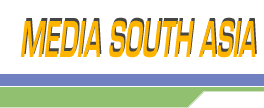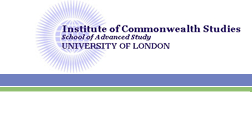Report of the Media Monitoring
and Advocacy Workshops at Nasik, Kolkata and Dhaka
Follow-Up of the Media South Asia Workshop
on Representing Viewers and Listeners
Introduction
The Centre for Advocacy and Research has conducted
follow-up workshops at Nasik, Kolkatta and Dhaka. At Nasik, the
primary focus was on building the perspective and sensitizing the
members of the organisation to the potential scope of advocacy as
a strategic tool. In addition we also interacted with the community
leaders and volunteers working as media educators and shared CFAR’s
experience and expertise in disseminating media education. At Kolkatta
the primary focus was on how to engage with media content, how to
monitor it both as a part of the viewing public as well as a researcher.
A small part of the time was also spent exploring how a specific
advocacy initiative on a growing concern such as sexual harassment
at work place should be strategically developed. At Dhaka the focus
was on enhancing the perspective and skill to do media monitoring
with a gender and development perspective.
Major Challenge
One major challenge that emerged from all the three places was an
overwhelming feeling among participants that only a small beginning
had been made. Given the days (one and a half to three days) spent
intensely exploring the issue and developing a perspective that
was both contextual and as far as possible relevant to their frame
of reference, it was felt that more needed to be accomplished. Their
curiosity and interest had been aroused. They were even ready to
revisit and relearn new perspectives, engage with new challenges,
go beyond seeing media and communication as institutional processes,
with predictable biases and priorities and instead focus on its
intended and unintended effects on users of the media. In fact,
learn to engage with media content from the point of view of the
user and the various groups that get excluded from the process rather
than assessing the content per se. It became, clear to them that
we need to begin with the premise that media content was likely
to be shaped and informed by many factors and pressures and what
was important was to comprehend them in order to engage with its
effects.
Having realized this, the process of re-looking
at the media from a different perspective could not be effectively
consolidated. Most participants felt that they needed far greater
professional exposure and mentoring to be able to do so. Anuradha
Mukherjee, Kolkata rightly said that such an understanding of the
media and its potential for advocacy was “partly intuitive”,
but even the ability to be intuitive required a process of learning.
The Process
Abhivyakti (Nasik)
Abhivyakti brought together an institutional retreat-that coincided
with the 10th birthday of the organisation- and the workshop to
build organisational capacity in conducting media advocacy, facilitated
by a team from CFAR.
Abhivyakti has been involved for many years in
development communication, collaborating with grassroots groups
and movements, extending to these groups all forms of communication
support, including the production of documentaries. They have also
gained expertise in using live media - song and drama - to build
rapport with the community, motivate and empower them. Besides this
core activity they are also actively supporting the organisational
process of building grassroots networks that could collectively
fight for the rights of the tribal and other marginal communities.
Therefore given their forte and years of institution
and team building, the questions that arose was to what extent should
the workshop be used to consolidate the existing efforts and processes
and was there a need to go beyond the advocacy initiatives that
they were already engaged in. It was also feared that any such expansion
of the process could compromise the cohesion of the organisation
and force it to dilute its commitment to the original vision and
mandate of the organisation. As an activist group, they had great
stakes in social mobilisation and movements. There was a fear that
many of these processes can change the character and priorities
of the organisation.
The CFAR team had to respect this process of collective
introspection and individual review that the members of the organisation
were inclined to be involved in. Within this internal framework
we had to make an effort to get them to engage with advocacy as
a strategic tool to advance what they see as the vital ideological
and material struggles.
To bring about the fusion of conceptual and experiential
knowledge with the functional, day to day needs and programmatic
thrust areas of Abhivyakti we adopted the following process:
The first session was devoted to getting to know
each other and in creating individual and common interest areas
for the workshop. Every member of the organisation shared their
experience and what they saw as professional challenges and learning.
They expressed their expectation from the workshop and clearly articulated
their need for specific functional skills and knowledge.
The functional challenges lay in the following
areas:
More inclusive dissemination of communication materials.
Making the community responsive to an informed public discourse
on media and its effects.
Building the capacity of the organisation to do
sustained and result-oriented advocacy on concerns of grassroots
organisation in an environment where the State is progressively
disengaging from its responsibility as a development agency or as
vital stakeholder and this is adversely impacting the lives of the
poor.
To make sure that any process of re-strategizing
builds on their strengths and maintains a measure of continuity
while developing new skills and perspectives.
This sharing formed the bedrock of the sessions
that followed. The next day and a half was dedicated to practical
exercises of reviewing a communication product, developing an advocacy
and communication initiative through a community needs assessment
exercise and a community participation process. Some of the preparatory
work for the exercises had been done even prior to the workshop
and the session was used to share their effort.
The CFAR team used the above process to impress
on them the need as advocates to not only engage with the reality
as it exists on the ground but to also deal with the media’s
construct of this reality. In engaging with the latter what is important
to understand is why has the media framed the issue in a particular
manner and can this frame be influenced or not. Any new or correct
evidence or information can only be brought into a public discourse
provided we influence the manner in which the issue is framed.
This was demonstrated by monitoring the media,
analyzing content, images, representation and perspective. Based
on the critique of specific news reports and the participants experience
with advocacy, social mobilization, networking and alliance building
an effort was made to build their perspective on using the feedback
from the community to strengthen the voices of the people and the
marginal sections of the community.
Sanhita (Kolkata)
The staff and volunteers associated with Sanhita
were the main participants at the two-day training workshop on developing
skills and perspectives on media monitoring and advocacy. But, they
had also invited a small group of students from Jadavpur University
doing their post-graduation in mass communication and a few freelance
media researchers.
The first session was devoted to understanding
the importance of monitoring before engaging in any kind of advocacy
efforts. Each of the participants shared their relationship with
the medium. Akhila stressed the point that the media cannot be monitored
just as a researcher. We need to understand the susceptibility of
the viewer. To illustrate this, we looked at the Fair and Lovely
advertisement (a fairness cream).
The participant looked at the imagery from two
points of view – one their own and the other from that of
a relative or acquaintance who was likely to have a different take
on it or even an experience of it. The participants came up with
their personal experiences and notions about the product and the
ad and also shared what they considered would be the response of
their mothers, daughter and maidservant. The imagery and the story
line was then deconstructed to show how it was possible to read
the same text in different ways, get different messages and feelings
from it.
By systematically deconstructing the ad frame by
frame, looking at the use of story-line, verbal and visual expression,
emotional hook and technical elements like music, camera angle etc.
we were able to deal with the different elements that were influencing
the reception of the viewer.
This session was followed by an equally interactive
session on Monitoring Fiction – its objectives as well as
methodology. The participants were shown certain clips from primetime
fiction where religious or mystic symbols were used to heighten
drama. The CFAR team had taken a set of quantitative formats for
monitoring fiction. Each participant went through the exercise of
administering the format and collectively discussing it. This helped
them to understand how quantitative data indicates the qualitative
issues and enriches the qualitative analysis. In the session on
qualitative monitoring, we picked up one of the clips and deconstructed
it frame by frame. This was done to illustrate how quantitative
categories such as the use of public and private space, physical
appearance, temperament, attitudes and behavior of the protagonists
influence qualitative analysis of the portrayal and representation
of women, men and family.
The next day was dedicated to the objectives and
methodology of media advocacy. As Sanhita is primarily working with
the issue of violence against women and sexual harassment at work
place, it was decide that this session would be devoted to the latter
issue. The session began with a situational assessment, went on
to a programmatic assessment and an analysis of the advocacy options
that were available to the organization and concluded with developing
a design and plan for an advocacy initiative. This helped the participants
to understand the analytical process that is necessary for the design
of an advocacy initiative.
The workshop concluded with a public meeting chaired
by Ms. Jashodara Bagchi, Chairperson of the Women’s Commission
of West Bengal. Ms. Akhila Sivadas, CFAR addressed the public meeting,
focused on how civil society should respond to the challenge of
an all powerful media, what should be the role of a watchdog body
like the State Commission for Women and also traced the genesis
and growth of CFAR. What was impressive about the meeting was the
high turnout of people from different walks of life, the active
interaction and discussion that followed and a consensus that emerged
that it was important for organisations in West Bengal to tackle
this concern in a systematic manner.
BCDJC (Bangladesh)
The Bangladesh Centre for Development, Journalism
and Communication (BCDJC) brought together representatives from
different civil society organisations working on media and communication,
women’s rights, human rights, building resource centres, conducting
training’s on gender and human rights and working with academic
institutions. Given the disparate nature of the group the three-day
workshop had to ensure some common expectations from training workshop.
To identify this, the first session was devoted to a sharing by
the participants. Two studies dealing with the low participation
of women in the media and anti-women semiotics in rape reportage
were discussed in depth to understand the group dynamics and the
concerns. The opportunity was also used to explain to the participants
the rigours of a public interest research.
This was followed by sessions when we monitored
the media as viewers and as researchers. Quantitative and qualitative
formats were filled up on fiction and news to explain the process
of monitoring, how to tabulate and analyse data both from a development
and a media research perspective. It was clear that a balance between
the two perspectives was necessary in order to make them conscious
of the kind of public advocacy that we need on this issue.
An extremely lively interaction took place on both
the issue and the methodology that we were demonstrating to the
group. Since it was a highly mixed group many kinds of questions
and doubts were raised. Some related to the theoretical understanding
of how images can be read, others related to the kind of activism
that we need to do with media to make it conform to a more progressive
representation of gender. There were a lot of different interpretations
of cultural symbols that get depicted on satellite television and
the kind of impact that content produced in India would have on
viewers in Bangladesh. The participants needed two days to grasp
the importance of this initiative. However they left no stones unturned
to debate and discuss the different issues. We were able to convince
them that any broad perspective that does not get supported by rigorous
research and appropriate methodology would prove counter-productive
and make the effort unsustainable.
Annexure 1
Workshop on Media Advocacy and Development
Communication with Abhivyakti (Nasik)
January 20th – 21st, 2003
Agenda
Day 1: January 20th, 2003
Introduction of Participants
9.30 a.m. to 11.30 a.m.
Setting the Context
Overview of the Regional and National Media
Identifying the Key Concerns, Issues and Gaps to be explored and
addressed
11.30 a.m. to 1.00 p.m.
Lunch
1.00 p.m. to 2.00 p.m.
Media Advocacy: Building Perspectives and Understanding
Case Study on Coverage of HIV/ AIDS, Malnutrition in
Maharashtra in print and Electronic media
Exercise on analysing the coverage from a media advocates’
perspective
2.00 p.m. to 4.00 p.m.
Media Advocacy - A Theoretical Construct
4.00 p.m. to 6.00 p.m.
Experience Sharing on Advocacy Initiatives
Planning an Advocacy Campaign on a local issue
6.00 p.m. to 8.00 p.m.
Day 2: January 21st, 2003
Summing Up of Day 1’s proceedings
9.30 a.m. to 10.30 a.m.
Sharing of Abhivyakti’s Experiences and Concerns
10.30 a.m. to 12.00 noon
Presentation of the Plans for Advocacy Campaigns
12.00 noon to 1.30 p.m.
Lunch
1.30 p.m. to 2.30 p.m.
Decoding the Media
Development Communication
Exercise on analysing visual media content from a development activist's
point of view
2.30 p.m. to 4.00 p.m.
Mainstream Communication
Understanding popular media imagery (Ads and serials)
4.00 p.m. to 5.00 p.m.
Annexure 2
Workshop on Media Research and Advocacy
with Sanhita (Kolkata)
January 23rd and 24th, 2003
Agenda
Day 1: January 23rd 2003
Introduction
9.30 a.m. – 10.00 a.m.
Understanding the Role of Image Deconstruction.
How does it help in Media Monitoring?
(Eg. Fair and Lovely Advertisement)
10 a.m. – 12.00 p.m.
Monitoring Fiction – Goals and Objectives
Methodology
Clips on Religious and Mystic Symbols Used in TV Fiction
Defining Gender Representation- Clip KGGK- Om-Parvati
Interactive session – Exercise
11.30 a.m. – 1.30 p.m.
Lunch Break
1.30 p.m. – 2.30 p.m.
Discussion on the exercise
2.30 p.m. – 3.30 p.m.
Objectives for Ascertaining Audience feedback
Demonstration of FGD
3.30 p.m. – 5.30 p.m.
Day 2: January 24th, 2003
Objectives and Methodology of Media Advocacy
9.30 p.m. – 1.15p.m.
Lunch Break
1.15 p.m. – 2.15 p.m.
Discussion
Q and A
2.30 p.m. – 4.30 p.m.
Annexure 3
Workshop on Methodology of Media Monitoring
with Focus on Gender and Women with BCDJC (Dhaka)
March 23-25, 2003
Day 1: March 23rd, 2003
Introduction of Participants
9.00 a.m. - 9.30 a.m.
Session 1
Setting the Context
9.30 a.m. - 11.00 a.m.
Overview of the Regional and National Media
Identifying the Key Concerns, Issues and Gaps to be explored and
addressed
(By CFAR and BCDJC)
Sharing by the Participants
11.30 a.m. - 12.30 p.m.
Lunch
1.30 p.m. to 2.30 p.m.
Session 2
Monitoring Fiction
Goals, Objectives and Methodology
Exercises
(Clip from Kahani Ghar Ghar Ki, a clip from Alpha Bangla/ETV Bangla)
2.30 p.m. – 5.00 p.m.
Day 2: March 24
Session 3
Monitoring News
Goals, Objectives and Methodology
Exercises
(Clip from Star News, various clips on death of children in Kolkata)
9.00 a.m – 1.30 p.m.
Lunch
1.30 p.m. – 2.30 p.m.
Session 4
Audience Feedback
Methodology for ascertaining feedback
Demonstration of FGD - Domestic Violence in Tele-fiction
2.30 p.m. – 5.00 p.m.
Day 3: March 25th, , 2003
Session 5
Development Communication
Presentation of the Plans for Advocacy Campaigns
Decoding the Media
Development Communication
Viewing of a documentary film (Open frame on women panchayat members/
artists/ infanticide)
Exercise on analysing visual media content from a development activist's
point of view
Mainstream Communication
Understanding popular media imagery (Ads and serials)
9.00 a.m. – 1.30 p.m.
Lunch
1.30 p.m. – 2.30 p.m.
2.30 p.m. – 4.30 p.m.
Discussion
Q and A












